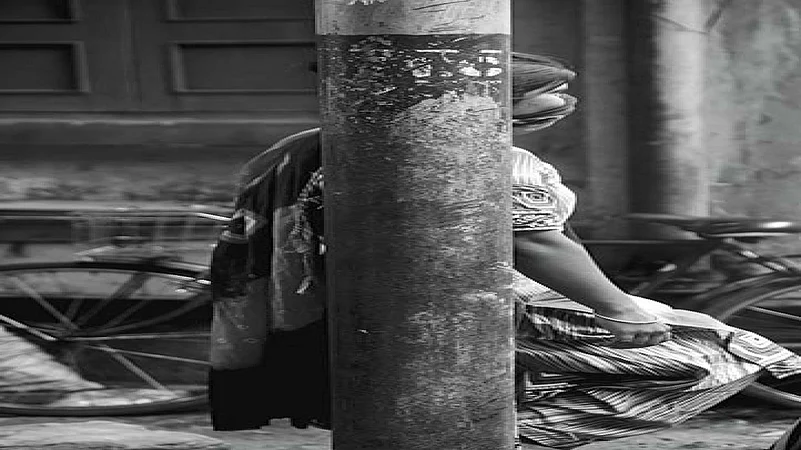In the warren of alleys, the sun struggles to break through the canopy of decrepit houses standing so close that there’s no room for a rat to escape a pursuing cat. That‘s Sonagachi—a two-century-old red light area, said to be Asia’s largest, in the northern quarters of Calcutta. It’s a cul-de-sac for about 11,000 resident sex workers and another 2,000 fly-by-day operators. The area had been overgrazed for years by men seeking “love”—no-holds-barred, brief and for a price. Then Covid arrived. Stay-at-home, lockdown, safety protocols and suchlike came tailing the deadly virus. All of a sudden, the attraction that drew clients like a magnet went silent. The lanes where women in cheap makeup solicited customers became empty. The crowd disappeared, there was no more jostling for elbow space by the light pole. “The girls stand on the streets for hours without anyone approaching them,” says a Sonagachi resident, alone at home, resting on a couch, partly to be ready in case she was called in to work, partly as a response to the trauma that she and fellow workers are enduring.
ALSO READ: Red, Green Lights
The only sound of life at the place usually teeming with people was that of a Hindi song played on a mobile phone. Then a knock on the door—a man peeks through the door left ajar. The “girls” describe such visitors optimistically as “green shoots” in a bleak year. But their numbers will never make up for the ruinous plunge in visitors who thronged the place before the coronavirus chased them away. (The place used to record 35,000-plus visitors a day in pre-Covid times.) The bright spots, where these women exist, are few and far between. The man seeks a bargain. The “lover” he sought out smirks: “You selfish dog, how will I pay rent and stave off hunger…” They drift into a room, the bedroll was unrolled. She is taking anything that comes by—needs the cash to get by and pay Rs 5,000 a month to the landlady, the lowest house rent in Sonagachi.
Many sex workers have left Sonagachi, unable to pay the rent. Those left behind—out-of-work women and their children—are surviving on relief from Durbar Mahila Samanyaya Samiti, an NGO, and similar efforts by the state government, local politicians and voluntary philanthropic organisations. Some are staying afloat by sewing masks, doing odd jobs. Kajol De, the secretary of Durbar, says the sex workers have not gone hungry, but most of them need cash desperately. Their income supports families back home in the countryside. A recent survey by Anti Human Trafficking Organisation, a non-profit, says about 89 per cent of Sonagachi’s sex workers have loans to repay, taken from the informal sector during the pandemic, and as many as 73 per cent want to leave the trade for better avenues. But they are in a debt trap—money lenders, brothel owners, and pimps. The morbid mortgage is like The Red Balloon—an Albert Lamorisse short film—having a mind of its own. It stalks Sonagachi, never straying far from it.
Photographs by Sandipan Chatterjee; Text by Snigdhendu Bhattacharya
















